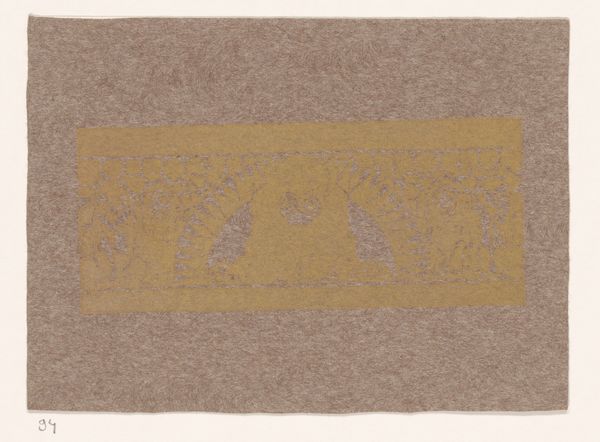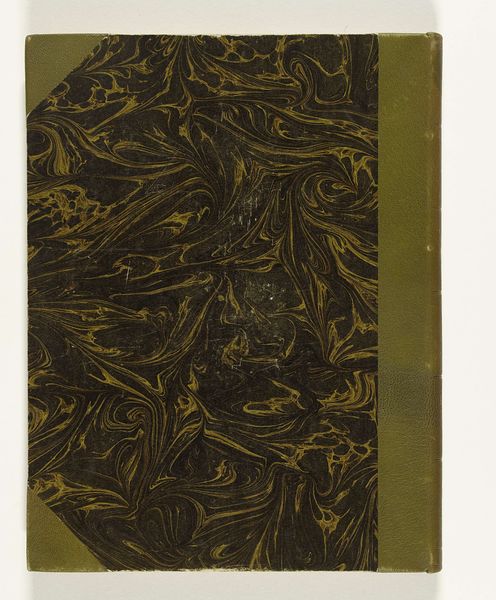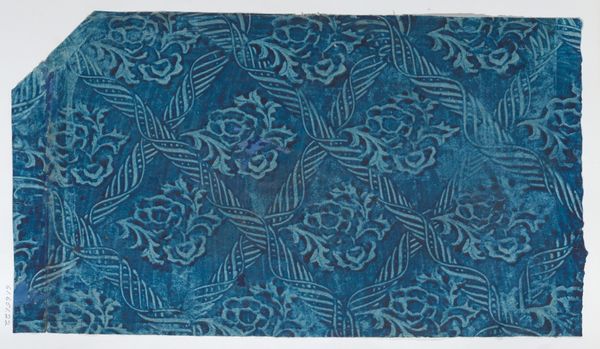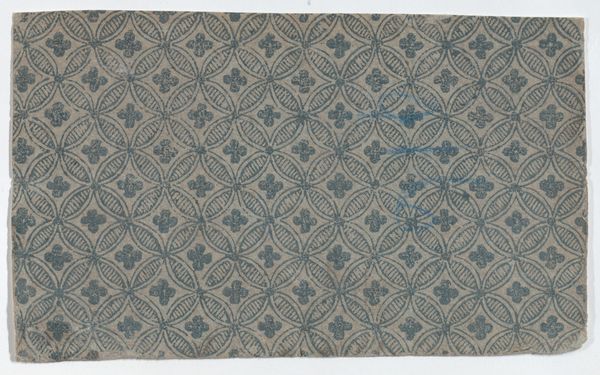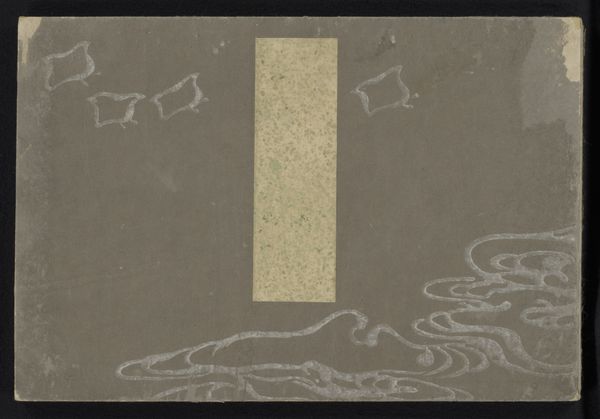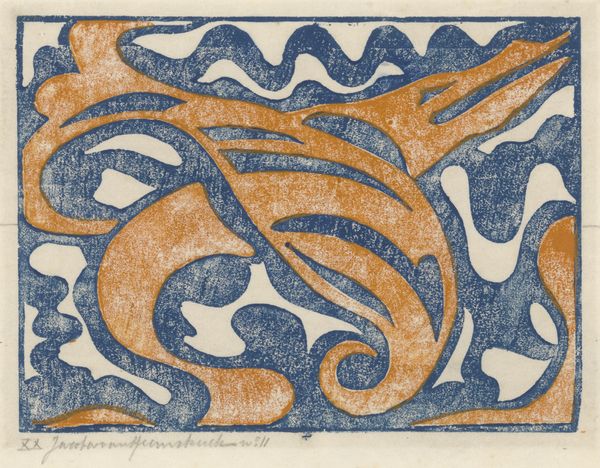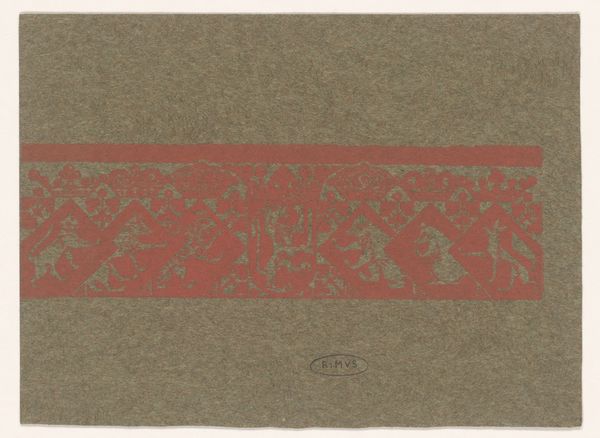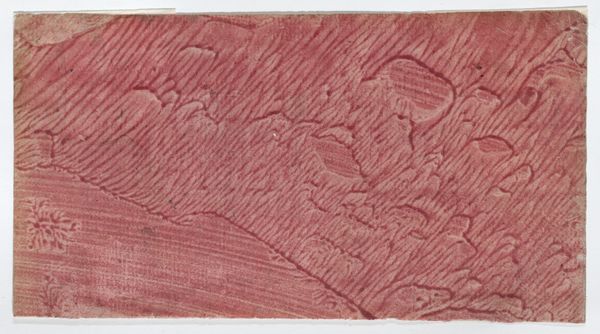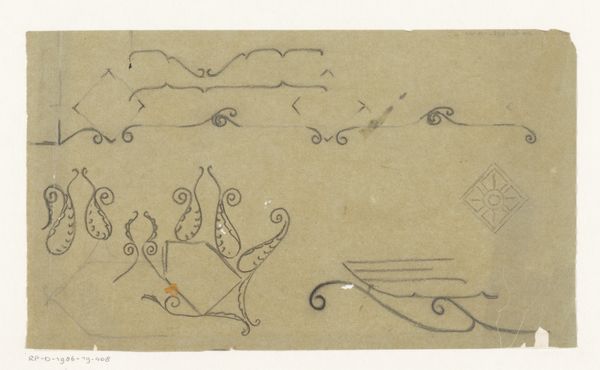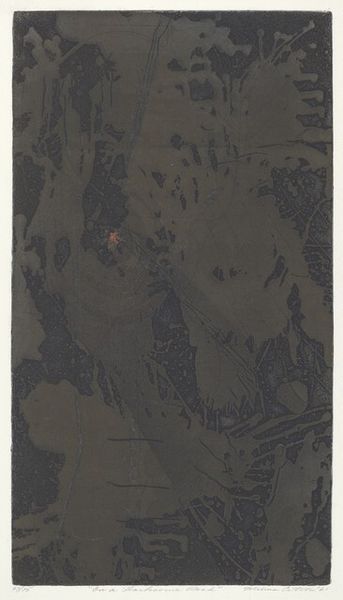
graphic-art, print, linocut, woodblock-print
#
graphic-art
#
organic
#
animal
#
linocut
# print
#
linocut
#
figuration
#
form
#
linocut print
#
woodblock-print
#
organic pattern
#
expressionism
#
line
Copyright: Public domain
Editor: We’re looking at “Cat,” a 1913 linocut print by Christian Rohlfs. The abstracted form and the sharp, almost aggressive, angles surrounding the feline give it a tense feeling. What do you see in the formal arrangement? Curator: The effectiveness of Rohlfs' "Cat" rests primarily on its composition. The contrasting colors emphasize the figure/ground relationship, immediately directing our attention to the subject. Editor: I see that. The cat's form really pops against the darker background. What about the lines, do they have a role to play? Curator: Indeed, the dynamic interplay between positive and negative space creates a compelling visual tension. The diagonal lines, aggressively hewn, contribute to a sense of movement and energy, disrupting any potential static quality of the central figure. Note how these formal elements affect the viewer's eye. Is the implied movement reinforced by line? Editor: It definitely is, almost as if the cat is frozen mid-pounce, or maybe even recoiling. Does the texture of the linocut influence how you interpret the work? Curator: The medium is integral to understanding the artist's choices. The roughness inherent in linocut lends itself well to the jagged, angular forms, contributing to the overall feeling of unease. Furthermore, observe the limitations inherent in the block printing process. How are sharp angles or lack thereof used effectively by the artist? Editor: I can see how the bold choices elevate the overall feeling. The harsh lines make a distinct expression! Thanks. Curator: A valuable observation. Thinking about the materiality enriches our viewing experience, doesn't it?
Comments
No comments
Be the first to comment and join the conversation on the ultimate creative platform.
